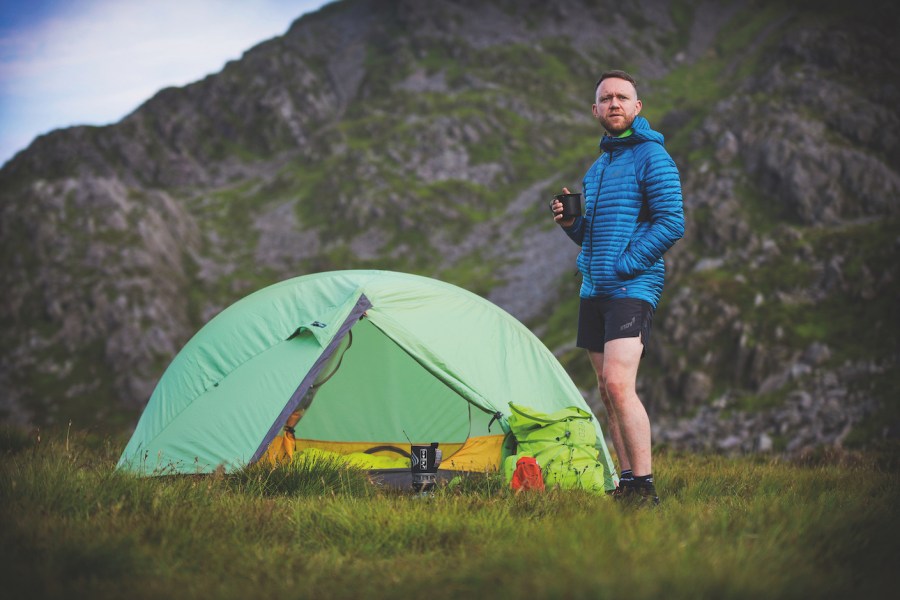Snowdonia’s Rhinogydd Traverse is one of the wildest and most challenging multi-day hikes in the UK. James Forrest takes us through the contents of his pack.
This advertising feature is sponsored by our friends at Exped.
Venturing off-grid into wild and uncompromising landscapes can be a magical experience. It amplifies the sense of adventure and isolation tenfold, but it also amplifies your vulnerability. Help is far away, escape routes are infrequent, resupplying requires a lengthy detour, and the consequences of a simple error could be serious. That’s why it’s essential to pack reliable gear that won’t let you down.
Earlier this summer I backpacked the Rhinogydd Traverse, a challenging 32km (20 mile) hike over the spine of the rugged and lesser-trodden mountain range in the west of Snowdonia. Over the two days, split by a wild camp, I exclusively used Exped’s camping gear, including a one-person tent, sleeping bag, sleeping mat, inflatable pillow, backpack and dry-bags.

Climbing Y Lethr, with Rhinog Fach behind. Photo: Ben Cannon
Why? Because the Swiss brand’s premium, highly refined products strike a sweet spot: light enough to carry on your back, but strong enough to cope with rough terrain and even rougher weather. With the Exped kit in my backpack, I felt confident I’d stay warm, dry, and sufficiently protected no matter what the ‘Rhinogs’ (as they’re often anglicised to) threw at me.
The sweet spot
Finding that sweet spot is a very tricky balancing act. Risk-averse wild campers often pack heavy, opting for the peace of mind that comes with carrying warm, strong and sturdy kit. But such an approach can result in an excessively weighty load, laden with four-season tents, thick sleeping bags and a myriad of spare clothes. On the other end of the spectrum, ultralight minimalists pack only the bare essentials – a strategy that frees them to travel light and fast through the mountains, unburdened by a heavy load. But come night-time, their levels of comfort, warmth and protection are likely to be compromised.
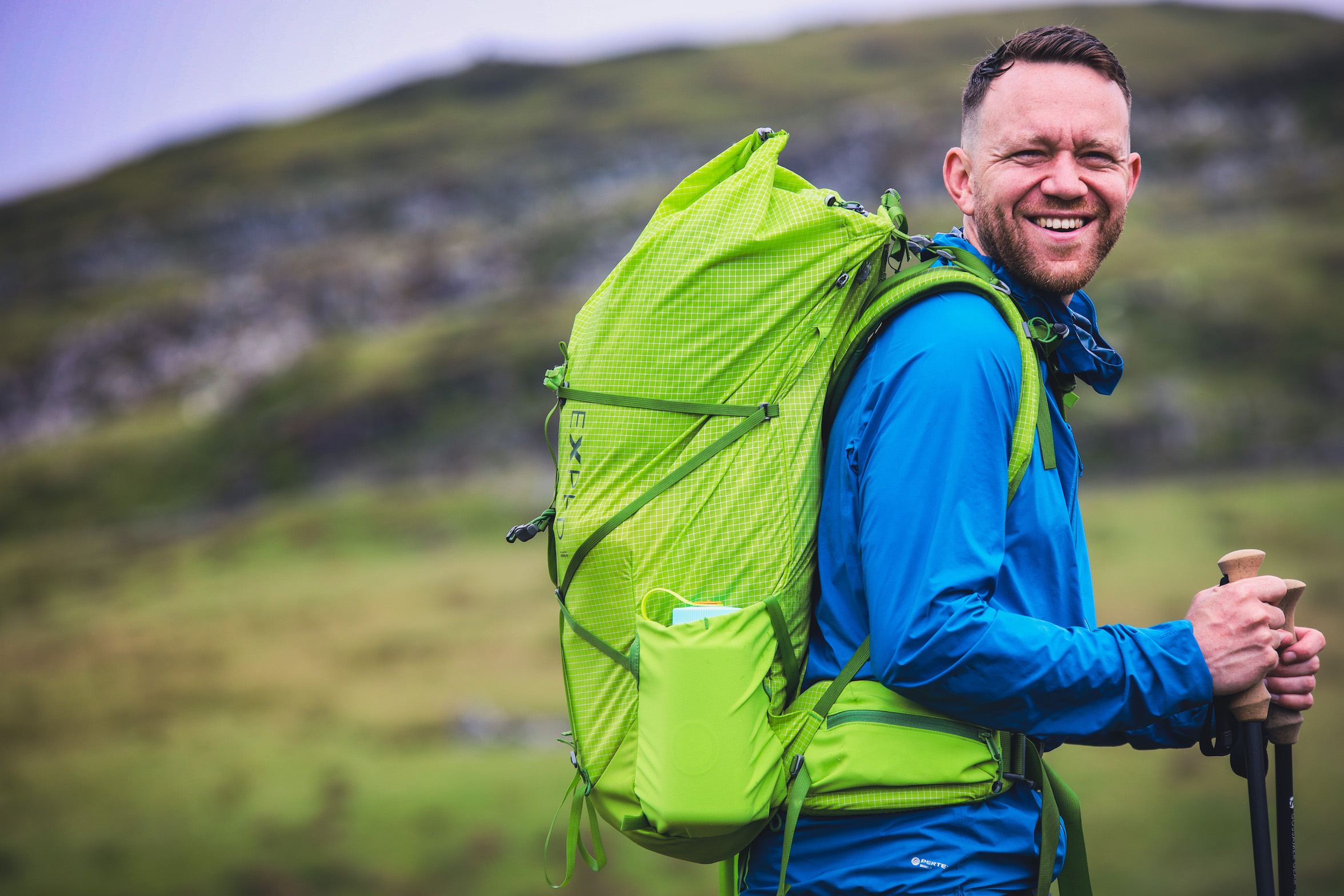
All the gear comfortably stowed in Exped’s Lightning 45 pack. Photo: Ben Cannon
Outdoor brand Exped has gear that caters for both of these specialist approaches, but for most wild campers a sensible tactic is to aim for the middle ground between these two extremes. And the Swiss brand also has excellent gear that caters for this happy medium – kit that’s as light as it can possibly be, without compromising in-field performance.
Mira HL tent
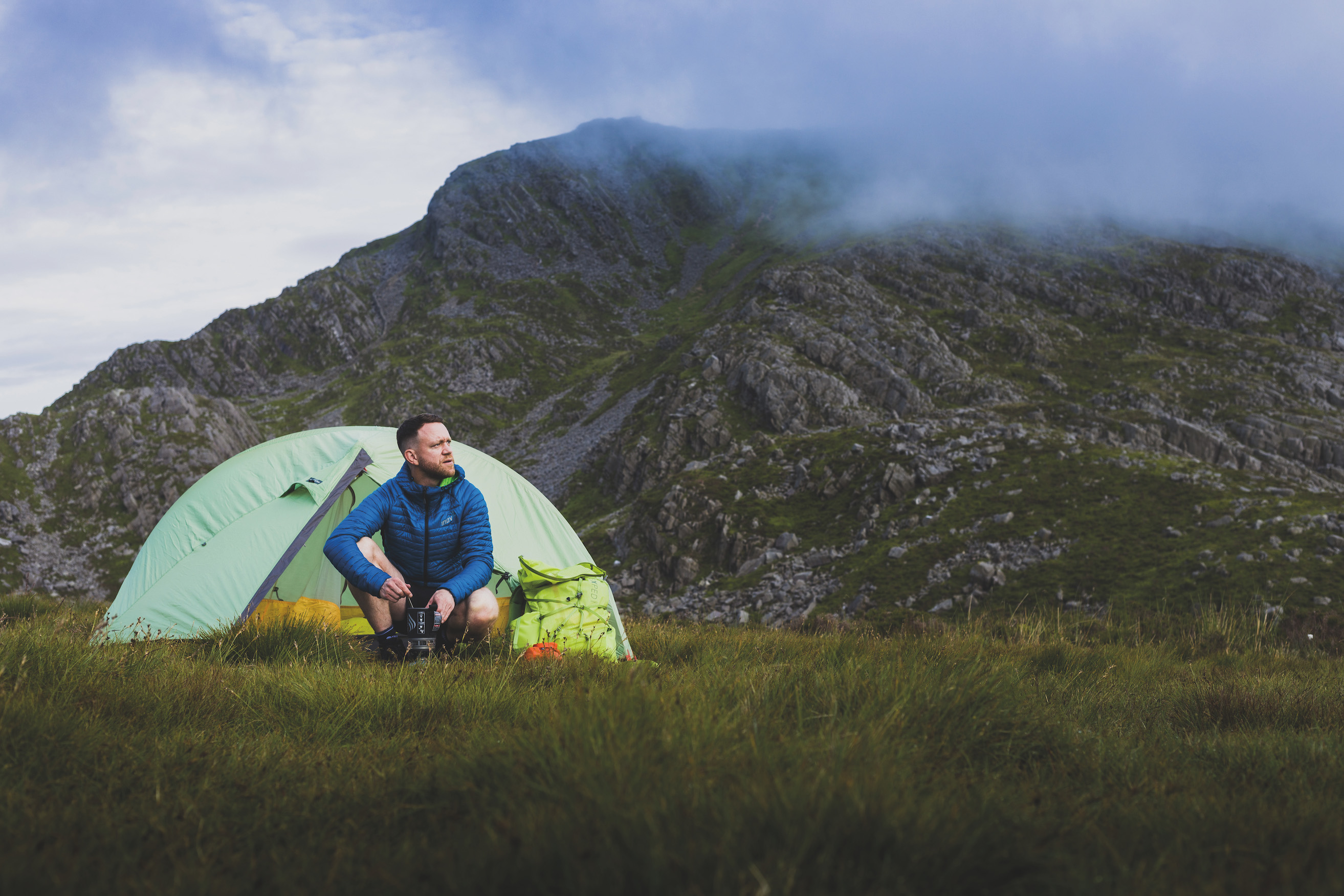
Wild camping in the Rhinogydd with the Mira HL tent. Photo: Ben Cannon
This three-season, dome-shaped, one-person tent offers impressive liveability and a sturdy build at a very low weight (1.2kg). A long ridge pole and nifty cross pole create steep walls and excellent headroom (105cm),while a final hooped pole adds height and space at the head end. The 20D flysheet has a 1500mm hydrostatic head and the inner is mostly mesh, ensuring good ventilation.
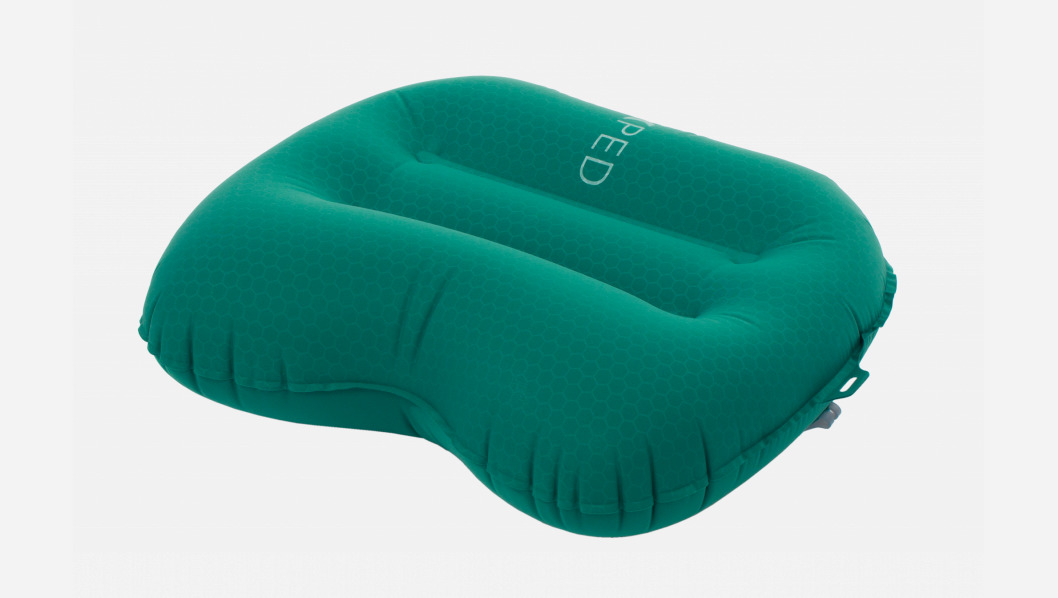 Air pillow UL M
Air pillow UL M
When wild camping, I tend to use a dry-bag stuffed with spare clothes as a makeshift pillow – but on this trip the Air Pillow UL delivered a massive comfort upgrade. It weighs next to nothing (54g), packs down exceptionally small, and inflates easily, whilst the fabric feels sufficiently robust that leaks should never be an issue.
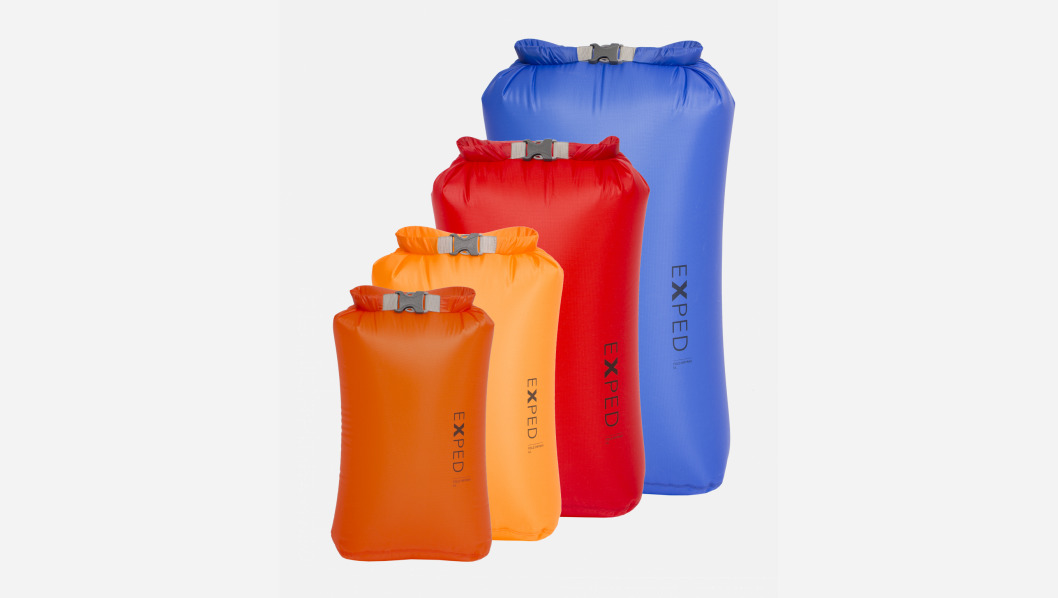 Fold dry bags UL 4-pack
Fold dry bags UL 4-pack
Dry-bags are the unsung heroes of your backpack – workhorses that do the unglamorous job of keeping your kit dry, protected and well-organised. These ultralight versions of Exped’s best-selling dry-bags are 100% waterproof, with a silicone-coated outer, PU-coated inner and fully taped seams. The fabric is a 15D ripstop nylon and the closure type is a classic rolltop-buckle combo.
Lightning 45 pack
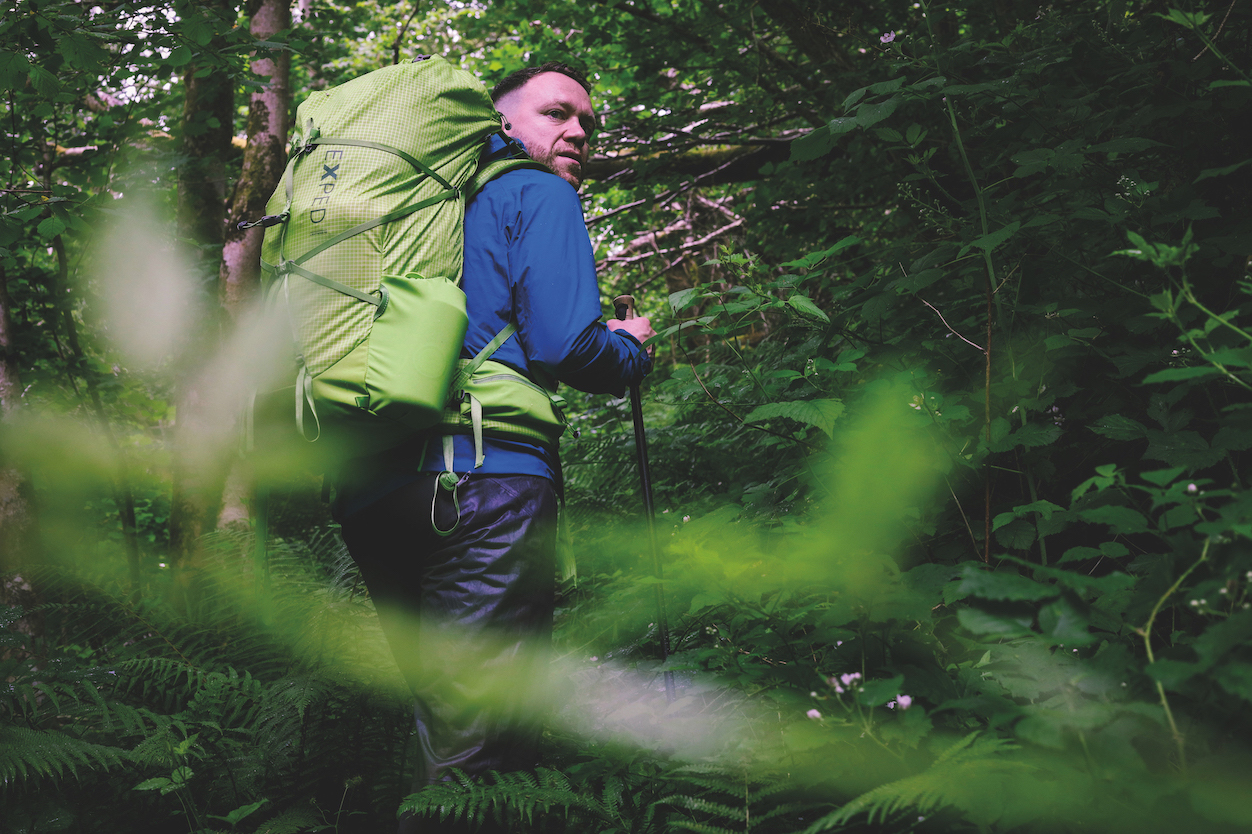
James makes his way through the woods. Photo: Ben Cannon
I’m not a fan of humongous backpacks. I find that for many summer trips, anything over 50L simply encourages you to over-pack, and you’ll end up with a heavy load before you know it. The 45L capacity of the Lightning, however, is perfect: enough space to swallow all you need, but nothing more. The shoulder straps, hipbelt and back system are comfy, whilst the drinks bottle holders and rolltop closure are superb.
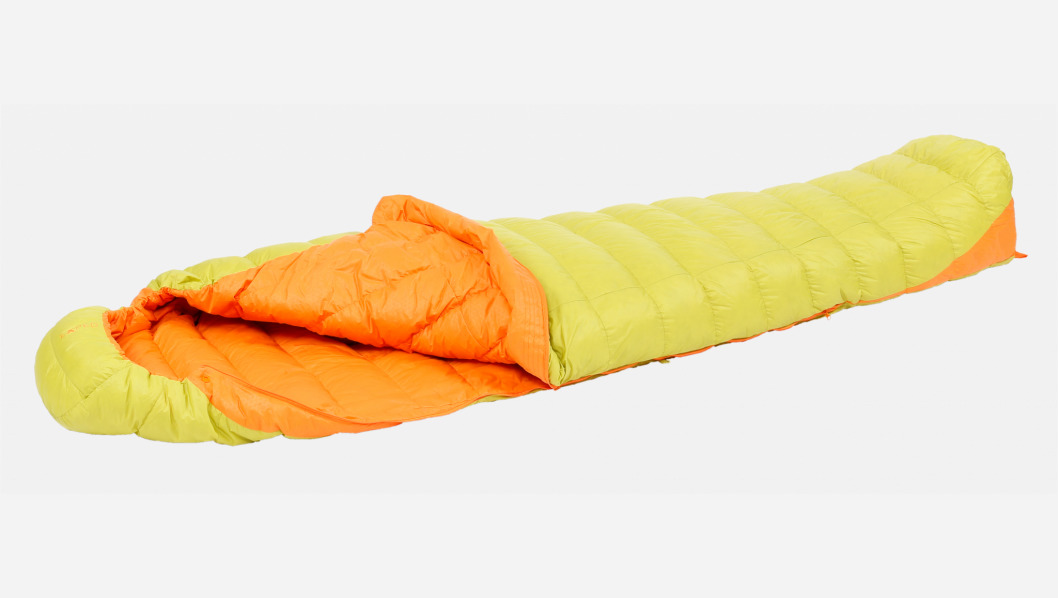 Ultralite -5C sleeping bag
Ultralite -5C sleeping bag
I slept like a baby in this sleeping bag. Perhaps it was the Rhinogs-induced fatigue, but I certainly think the bag’s cosiness helped. The thick padding of 520g of 800 fill power goose down kept me toasty and warm, whilst the long zip, adjustable hood and well-shaped footbox enabled me to fine-tune my comfort levels. The bag weighs just 870g and has a 0°C comfort rating.
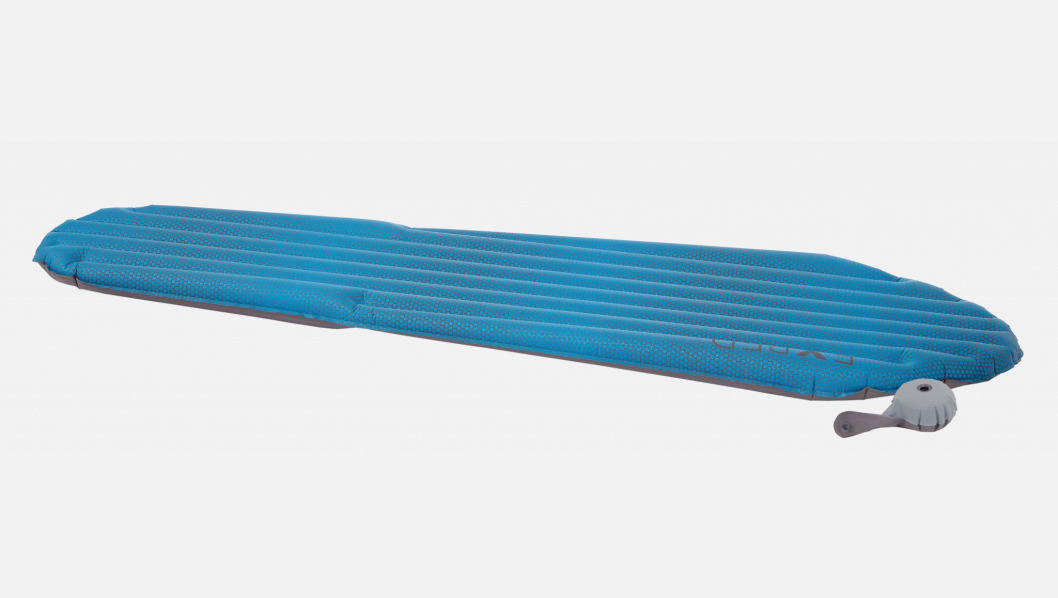 Airmat HL M sleeping pad
Airmat HL M sleeping pad
For me, a good inflatable sleeping pad will inflate and deflate easily, stay quiet when you toss and turn during the night, and provide a thick, soft and comfy barrier above the cold, hard ground. The Airmat HL M ticks all of those boxes for spring and summer use. It weighs 310g, measures 183x52x7cm, and has an excellent one-way valve. Exped also provide a nifty inflation device with all mats, which makes them far quicker and easier to inflate than blowing them up ‘manually’, and prolongs the lifespan of the mats.

